KOTA
The next city on our list, Kota lies on the banks of the Chambal River and is known for its palaces and gardens. Here as well, a boat ride on the pristine Chambal River gives one a chance to experience the magnificent aquatic life.
What makes the boat ride in Kota different from other cities lying on the banks of Chambal river is that within minutes one will experience the cliffs ascending on both sides of the river, thus giving a feeling of boating through a canyon.
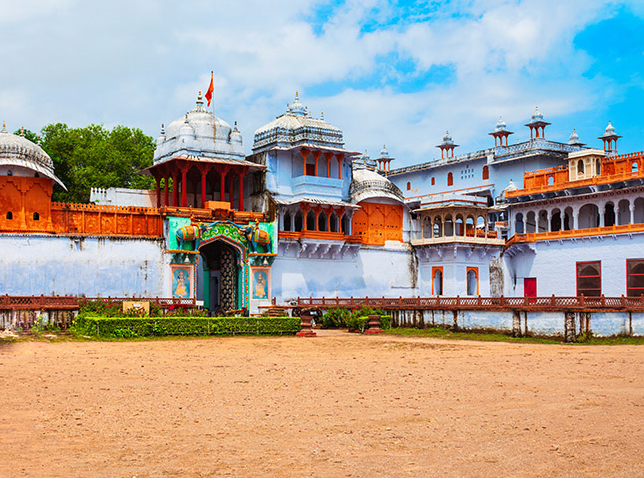 While here, one may also like to admire the beauty of Jag Mandir Palace, built in the middle of the Kishore Sagar Lake. Enjoy the boat ride to have a panoramic view of the palace built in the 1700s by one of the queens of Kota. There are also many temples and structures that can be explored from here for their centuries-old history and religious significance.
While here, one may also like to admire the beauty of Jag Mandir Palace, built in the middle of the Kishore Sagar Lake. Enjoy the boat ride to have a panoramic view of the palace built in the 1700s by one of the queens of Kota. There are also many temples and structures that can be explored from here for their centuries-old history and religious significance.
INSIDER TIP: For some panoramic views of the Chambal River adorned by the surrounding wilderness, one should visit Garadia Mahadev temple that lies around 28 Kms from Kota. While in Kota, one should also not miss a visit to the local loom to see the creation of hand-weaved Kota Doria Sarees made out of cotton and silk.
Leaving Kota, Chambal flows bordering Sawai Madhopur and Karauli. It is also a source of water for Ranthambore National Park (near Sawai Madhopur) and Kaila Devi Sanctuary (near Karauli).
SAWAI MADHOPUR
Visit Ranthambore National Park in Sawai Madhopur to see Royal Bengal tigers in their natural surroundings along with a host of other wildlife species. It had been the hunting ground for Jaipur's royals until it was converted into a tiger reserve along with the adjoining Kela Devi Sanctuary.

The dry and deciduous forest with open grassy meadows is one of the reserves with the largest Tiger population in India. Along with various species of plants, birds, and reptiles, one may also get to spot many wild animals like, Royal Bengal tiger, Indian leopard, sloth bear, marsh crocodile, spotted deer, striped hyenas etc., during a wildlife safari here.
The park has been named after the tenth-century Ranthambore fort that lies with in the forest and is a UNESCO World Heritage site. Boasting of Rajput architecture, the seven-gated fort has 03 temples and offers panoramic views of the surrounding forest.
Take a glimpse of the safari in Ranthambore National Park and river safari for the sighting of Gharials at Palighat.
INSIDER TIP: From Ranthambore, one may take an excursion to Palighat that lies around 45 kms from here to get a chance for the sightings of Gharials during a river safari. The region also boasts of hosting more than 300 species of migratory birds.
KARAULI

Karauli, with the Chambal River flowing through the south-eastern boundary, is an ancient town on off the beaten track with a fort and two palaces, which can be visited to admire the frescos, jaali work, stone carvings, glass inlay works, and classic paintings. One of these two palaces has been restored into a boutique heritage hotel. Nearby, Kaila Devi wildlife sanctuary that was named after the local deity, is considered the buffer zone of Ranthambore National Park.
Bordering these regions, Chambal river reaches the culturally rich town of Dholpur.
DHOLPUR
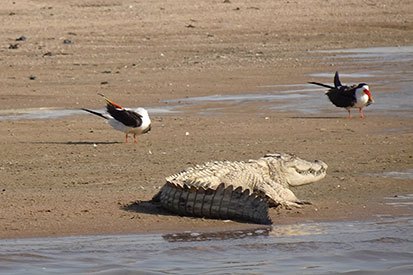
Situated on the left bank of Chambal River, Dholpur is surrounded by the ravines of Chambal. The quiet town is famous for the extraction of red coloured sand stone that was used in the construction of the Red Forts in Delhi and Agra. The City Palace also built in red stone, that has now been restored into a heritage hotel is a town landmark. The place is also known for boat safaris in the Chambal River as well as Chambal ravine safaris with jeeps.
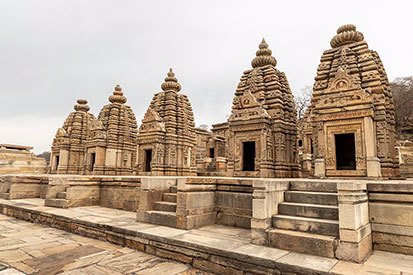
There are many historical monuments that one can visit in the vicinity of Dholpur. Among them Machkund, an ancient sacred place that lies amidst the calm ambience is sure to mesmerise everyone. It is a complex of temples built in red stone and surrounding a sacred lake. The place witnesses daily morning and evening ceremonies. The annual fair that takes place in the month of September every year sees thousands of devotees participating to gain divine blessings. Another place worth a visit from Dholpur for satisfying a spiritual soul is the Bateshwar temple complex. It consists of a series of Shiva temples along the river that also offers a panoramic view. Every year in November, the place sees a big cattle fair that is attended by thousands of pilgrims and numerous tourists.
Like the Chambal River, India is home to many rivers that have unparallel history. When planning a trip for your clients, be sure to include a visit to one of the magnificent river bank cities in India and your guests will surely get an experience of a lifetime. At
Indo Asia Tours, the itinerary is not just a travel route or a trip. We design, conceptualise and handcraft every journey for you. Our special customised itineraries and curated experiences in different destinations are what make for those memorable travel moments.

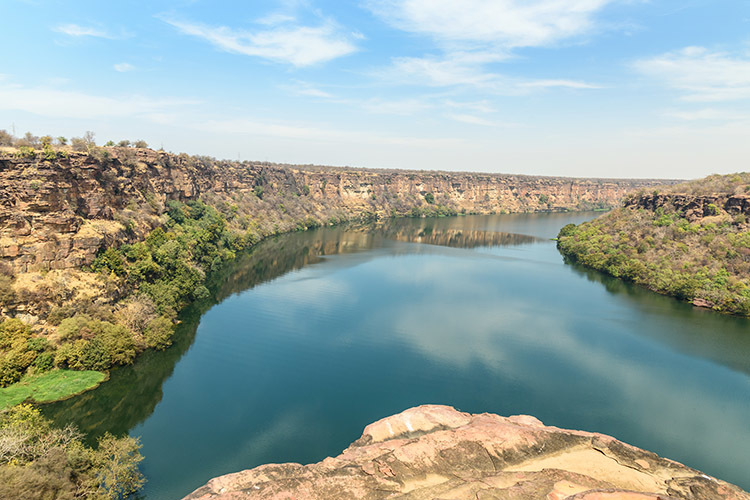
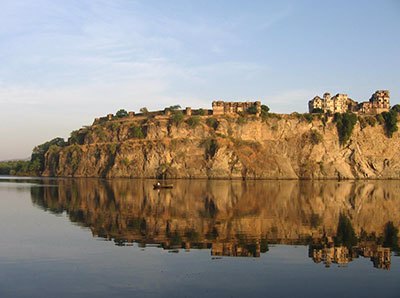 From here, one can undertake a river trip on a country boat to discover the aquatic life dominated by gharials and marsh crocodiles along with a variety of winged species. One may also visit the surrounding tribal villages and experience the life in these pristine villages where some are still not electrified. For the archaeology buffs, a drive of few kilometres gets to the tenth-century Badoli temples. The temple complex dedicated to Hindu Gods and goddesses has beautifully carved stonework.
From here, one can undertake a river trip on a country boat to discover the aquatic life dominated by gharials and marsh crocodiles along with a variety of winged species. One may also visit the surrounding tribal villages and experience the life in these pristine villages where some are still not electrified. For the archaeology buffs, a drive of few kilometres gets to the tenth-century Badoli temples. The temple complex dedicated to Hindu Gods and goddesses has beautifully carved stonework.
 While here, one may also like to admire the beauty of Jag Mandir Palace, built in the middle of the Kishore Sagar Lake. Enjoy the boat ride to have a panoramic view of the palace built in the 1700s by one of the queens of Kota. There are also many temples and structures that can be explored from here for their centuries-old history and religious significance.
While here, one may also like to admire the beauty of Jag Mandir Palace, built in the middle of the Kishore Sagar Lake. Enjoy the boat ride to have a panoramic view of the palace built in the 1700s by one of the queens of Kota. There are also many temples and structures that can be explored from here for their centuries-old history and religious significance.
 The dry and deciduous forest with open grassy meadows is one of the reserves with the largest Tiger population in India. Along with various species of plants, birds, and reptiles, one may also get to spot many wild animals like, Royal Bengal tiger, Indian leopard, sloth bear, marsh crocodile, spotted deer, striped hyenas etc., during a wildlife safari here.
The dry and deciduous forest with open grassy meadows is one of the reserves with the largest Tiger population in India. Along with various species of plants, birds, and reptiles, one may also get to spot many wild animals like, Royal Bengal tiger, Indian leopard, sloth bear, marsh crocodile, spotted deer, striped hyenas etc., during a wildlife safari here.
 Karauli, with the Chambal River flowing through the south-eastern boundary, is an ancient town on off the beaten track with a fort and two palaces, which can be visited to admire the frescos, jaali work, stone carvings, glass inlay works, and classic paintings. One of these two palaces has been restored into a boutique heritage hotel. Nearby, Kaila Devi wildlife sanctuary that was named after the local deity, is considered the buffer zone of Ranthambore National Park.
Karauli, with the Chambal River flowing through the south-eastern boundary, is an ancient town on off the beaten track with a fort and two palaces, which can be visited to admire the frescos, jaali work, stone carvings, glass inlay works, and classic paintings. One of these two palaces has been restored into a boutique heritage hotel. Nearby, Kaila Devi wildlife sanctuary that was named after the local deity, is considered the buffer zone of Ranthambore National Park.
 Situated on the left bank of Chambal River, Dholpur is surrounded by the ravines of Chambal. The quiet town is famous for the extraction of red coloured sand stone that was used in the construction of the Red Forts in Delhi and Agra. The City Palace also built in red stone, that has now been restored into a heritage hotel is a town landmark. The place is also known for boat safaris in the Chambal River as well as Chambal ravine safaris with jeeps.
Situated on the left bank of Chambal River, Dholpur is surrounded by the ravines of Chambal. The quiet town is famous for the extraction of red coloured sand stone that was used in the construction of the Red Forts in Delhi and Agra. The City Palace also built in red stone, that has now been restored into a heritage hotel is a town landmark. The place is also known for boat safaris in the Chambal River as well as Chambal ravine safaris with jeeps.
 There are many historical monuments that one can visit in the vicinity of Dholpur. Among them Machkund, an ancient sacred place that lies amidst the calm ambience is sure to mesmerise everyone. It is a complex of temples built in red stone and surrounding a sacred lake. The place witnesses daily morning and evening ceremonies. The annual fair that takes place in the month of September every year sees thousands of devotees participating to gain divine blessings. Another place worth a visit from Dholpur for satisfying a spiritual soul is the Bateshwar temple complex. It consists of a series of Shiva temples along the river that also offers a panoramic view. Every year in November, the place sees a big cattle fair that is attended by thousands of pilgrims and numerous tourists.
There are many historical monuments that one can visit in the vicinity of Dholpur. Among them Machkund, an ancient sacred place that lies amidst the calm ambience is sure to mesmerise everyone. It is a complex of temples built in red stone and surrounding a sacred lake. The place witnesses daily morning and evening ceremonies. The annual fair that takes place in the month of September every year sees thousands of devotees participating to gain divine blessings. Another place worth a visit from Dholpur for satisfying a spiritual soul is the Bateshwar temple complex. It consists of a series of Shiva temples along the river that also offers a panoramic view. Every year in November, the place sees a big cattle fair that is attended by thousands of pilgrims and numerous tourists.
 Thank you, patrons, for reposing faith in our destinations and enquiring for customised virtual destination awareness training programs. We are proud to conduct them successfully so far and are looking forward to hold similar virtual destination awareness training programs for your team or yourself or a virtual tour for your clients. Let us know the destination of your interest along with your convenient date / time and we will be happy to set up a program for you.
Thank you, patrons, for reposing faith in our destinations and enquiring for customised virtual destination awareness training programs. We are proud to conduct them successfully so far and are looking forward to hold similar virtual destination awareness training programs for your team or yourself or a virtual tour for your clients. Let us know the destination of your interest along with your convenient date / time and we will be happy to set up a program for you.




